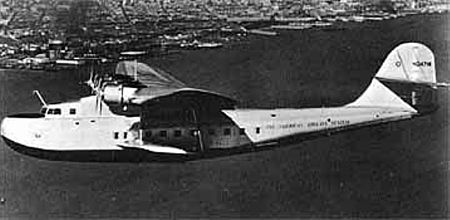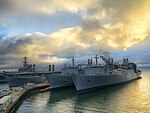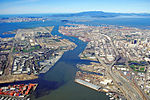China Clipper flight departure site
Alameda, CaliforniaCalifornia Historical LandmarksHistory of Alameda County, CaliforniaPan AmSeaplane bases in the United States

The China Clipper flight departure site is listed as California Historical Landmark number 968. It is the site from which Pan American World Airways (Pan Am) initiated trans-Pacific airmail service on November 22, 1935. A flying boat named China Clipper made the first trip, and the publicity for that flight caused all flying boats on that air route to become popularly known as China Clippers. For a few years, this pioneering mail service captured the public imagination like the earlier Pony Express, and offered fast luxury travel like the later Concorde.
Excerpt from the Wikipedia article China Clipper flight departure site (License: CC BY-SA 3.0, Authors, Images).China Clipper flight departure site
Saratoga Street, Alameda
Geographical coordinates (GPS) Address Nearby Places Show on map
Geographical coordinates (GPS)
| Latitude | Longitude |
|---|---|
| N 37.786772 ° | E -122.302745 ° |
Address
Naval Air Station Alameda Historic District
Saratoga Street
94607 Alameda
California, United States
Open on Google Maps








